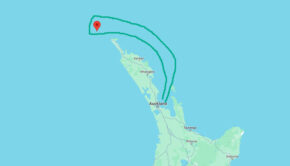Racing Rules: How much room is enough room?
Published on April 3rd, 2014
by Jos M. Spijkerman, International Judge/Umpire
In a great many rules a boat is entitled to “room”. Room to keep clear, room to sail a proper course, room to tack, etc. etc. Even the definition “Mark-room” starts by giving room to pass the mark on the required side.
Frequently I get questions about room involving a specific distance; “If I keep half a meter away from the other boat, do I give enough room?” or “10 centimetres was enough, wasn’t it?”
Sometimes I feel almost guilty in having to answer: “It depends”. The actual space and time a boat is entitled to when she’s been given room under the rules is depending on a number of factors. These factors are all described in the definition of “ROOM”;
Room: The space a boat needs in the existing conditions, including space to comply with her obligations under the rules of Part 2 and rule 31, while manoeuvring promptly in a seamanlike way.
Let’s go over these factors one by one:
Existing conditions;
These include things like wind-strength, wave-height and all other environmental conditions. A boat needs more distance in high wave, hard wind conditions then in no waves and low wind. If there are rolling waves shifting the boat to one side, the distance it needs is bigger then when these waves are not there. But existing conditions also include the boat-type. You can imagine that a laser doesn’t need as much room as say, a tornado, or a 12 meter yacht.
Manoeuvring promptly;
A boat is entitled to the room it needs to do the manoeuvre efficiently and promptly. But she does not get more room, if the crew are beginners who need more time and space to, for example hoist a spinnaker, or gybe or any other manoeuvre. The rules make no allowances for incompetent boat handling. If you are still learning you better make sure you do it away from other boats, because mistakes may result in being protested for taking too much room.
In a seamanlike way;
You are allowed to manoeuvre in a seamanlike way; that is to say with sufficient regard for the safety of the boat and crew. The room you are entitled to, is not so small that only, for instance, a crash-gybe, is possible. Especially rule 15 and 16 are interpreted that way. A keep-clear boat must do everything to keep clear, but not so that only an unsafe – “unseamanlike” – manoeuvre accomplishes that. Than the room provided is not enough.
Including space to comply with her obligations under rules of Part 2 and rule 31;
This addition is from the latest rulebook. But in fact it was already more or less done that way for a long time. The middle boat in a three boat overlapped mark rounding has to give mark-room to the inside boat and that means that the outside boat has to give that middle boat room to not only round the mark in the existing conditions, manoeuvring promptly in a seamanlike way, but also room to be able to give room to the inside boat, which is more room than the previous three conditions provided.
In summary;
If you consider all these conditions, then you can make an educated guess on the distances involved. An experienced sailor can usually tell if a boat takes more room than the definition provides. As a jury-member I usually ask the sailors at the table, if I don’t know the boat well enough. And also going out on the water observing the racing boats can tell you a lot.
And finally the principle of last certainty applies. Only when it is quite clear that a boat is taking more room than she is entitled to, can you start concluding that a rule might be broken.
Source: http://rrsstudy.blogspot.com/2014/03/back-to-basics-part-6-room.html









 We’ll keep your information safe.
We’ll keep your information safe.